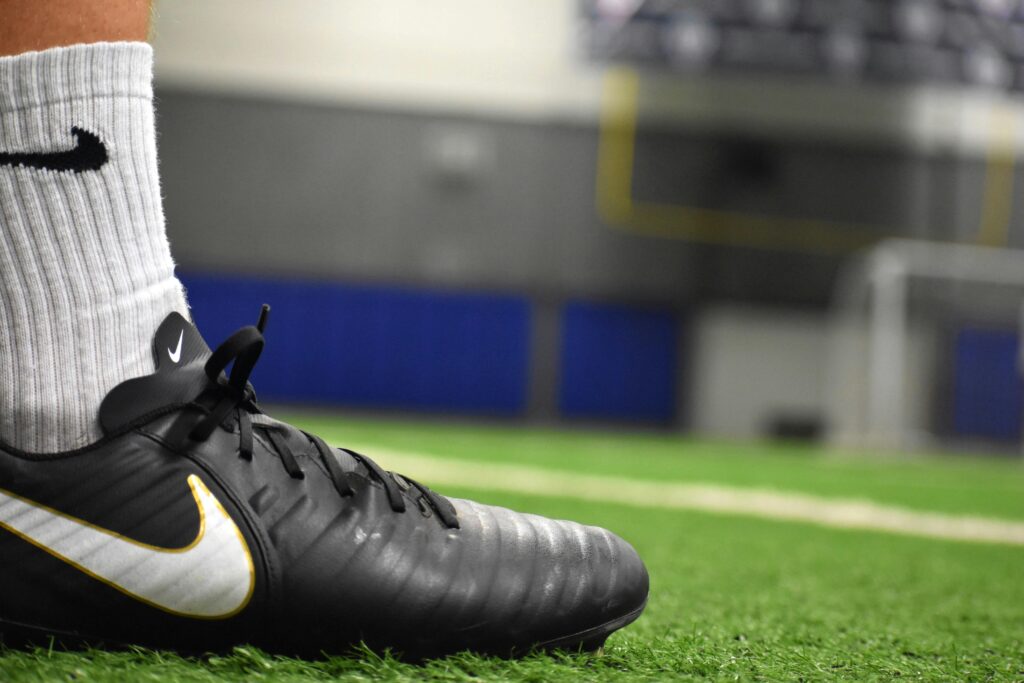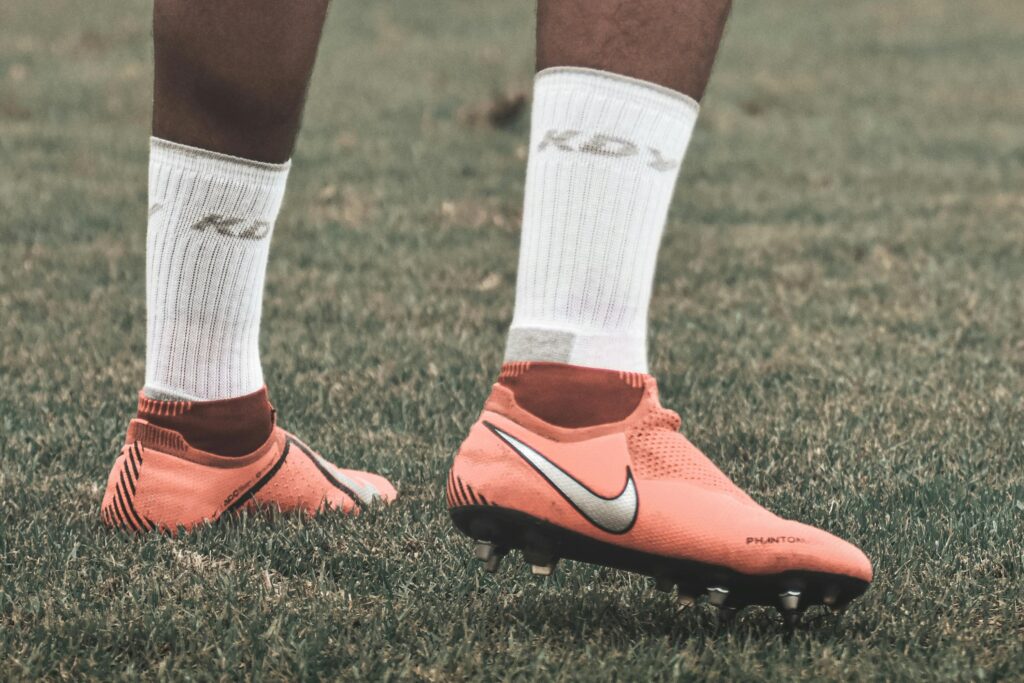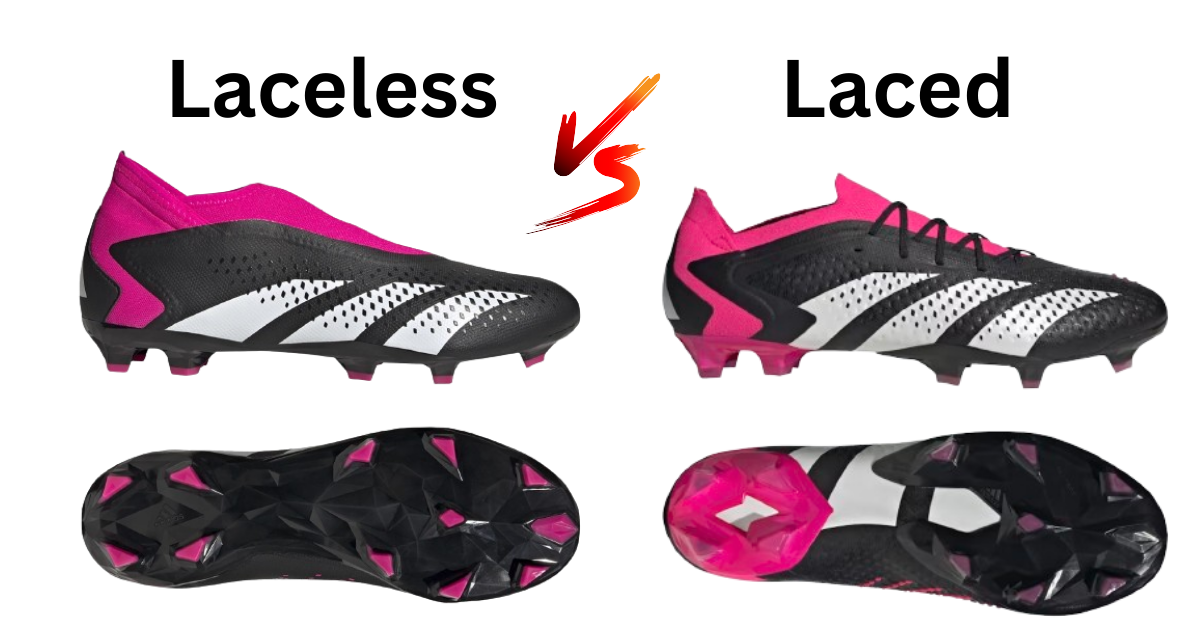In 2006, the Italian Company Lotto Sport released one of the most exciting and revolutionary footwear technologies, the original laceless soccer cleat known as The Lotto Zhero Gravity. In 2016, just a decade after releasing the first synthetic laceless cleats, Adidas released the Ace 16+ PureControl with a fully knitted upper miles ahead of the original laceless cleat.
The laceless Ace 16+ PureControl was a huge success, and now all three of Adidas’ main cleat silos have a premium laceless option available. Adidas is the main leader in laceless cleats, but in recent years, other brands such as Puma, Nike, and New Balance have been testing their own cleats, so do not be surprised if you see new laceless cleat options shortly.
Now comes the main question. Are laceless cleats worth the extra money? Although laceless cleats have fewer materials, they are usually the more expensive ones between the two types of cleats. In this post, I will break down the main differences between laceless and laced cleats to help you stay informed about which type is best for you.

How do Laceless Cleats Work?
Laceless cleats are exactly what they sound like; cleats without laces. But how do they stay on your feet if they do not have laces?
Laceless cleats are made to wrap around your feet and provide a sock-like fit and a lockdown sensation like laced soccer cleats. Sizing is crucial to getting the best fit and feel from a pair of laceless cleats.
Because laceless cleats’ sizing is universal, they will fit some people loose, some tight, and some perfect. If you are looking for a pair of laceless cleats that fit correctly, you must know your foot shape, type, and size and the size chart of the brand you buy the cleats from.
Advantages and Disadvantages of Laceless Cleats
Advantages
- Easy to use
- All you have to do is slide on the cleats, and you are ready to play
- Don’t have to worry about tying cleats during a game or training session
- Smooth upper
- It provides a more “barefoot feel” for the ball since laces do not get in the way
- It also provides a cleaner striking area
- Less Hazardous
- Don’t have to worry about another player’s cleat getting stuck on your laces
- Lower chances of falling due to not tripping over the laces
- Aesthetic design
- Most laceless cleat designs are more aesthetically pleasing than regular cleats
Disadvantages
- Expensive
- Laceless cleats are more expensive than regular cleats
- Even the lower model laceless options will cost extra
- Universal (one-size-fits-all) Design
- Laceless cleats might not be optimal for some people depending on their foot shape, type, and size
- Lose their elasticity over time
- This may affect how the cleats fit and feel
Advantages and Disadvantages of Laced Cleats
Advantages
- Adjustable and better lockdown
- It is easy to adjust, and players can tie the cleats how they’d like based on personal preferences and foot shape.
- Cheaper
- Compared to their laceless counterparts, laced cleats are usually cheaper
Disadvantages
- Laces
- Sometimes, the laces can get in the way when you are playing, such as by becoming untied often or by getting stuck on another player’s cleats
- Uneven surface area
- The laces also make for an uneven surface area, and some players may feel like they get in the way

Frequently Asked Questions
Why are laceless soccer cleats more expensive than regular soccer cleats?
Laceless soccer cleats are more expensive than regular soccer cleats because of the extra technology needed to make sure they provide lockdown from the materials and cleats themselves, not the lacing system.
Do laceless soccer cleats stretch?
Yes, like regular soccer cleats, laceless soccer cleats will also stretch over time as you wear them.
Conclusion
To lace or not to lace? That is a question many soccer players ask themselves when choosing a new pair of soccer cleats, arguably the most important piece of soccer training equipment. It is hard to say which type of cleat is best because everyone has different preferences and foot measurements.
If you have an uncommon foot type, it may be best to get laced cleats so that you can lock them down to your liking, but if you have tried laceless cleats before, had no problem with them, and enjoy the more natural feel, then stick with the laceless options.
The only way to know which type of cleat is best for you is to try them and decide from there. In this blog, I compared the main advantages and disadvantages of two popular types of cleats: laceless and laced.

